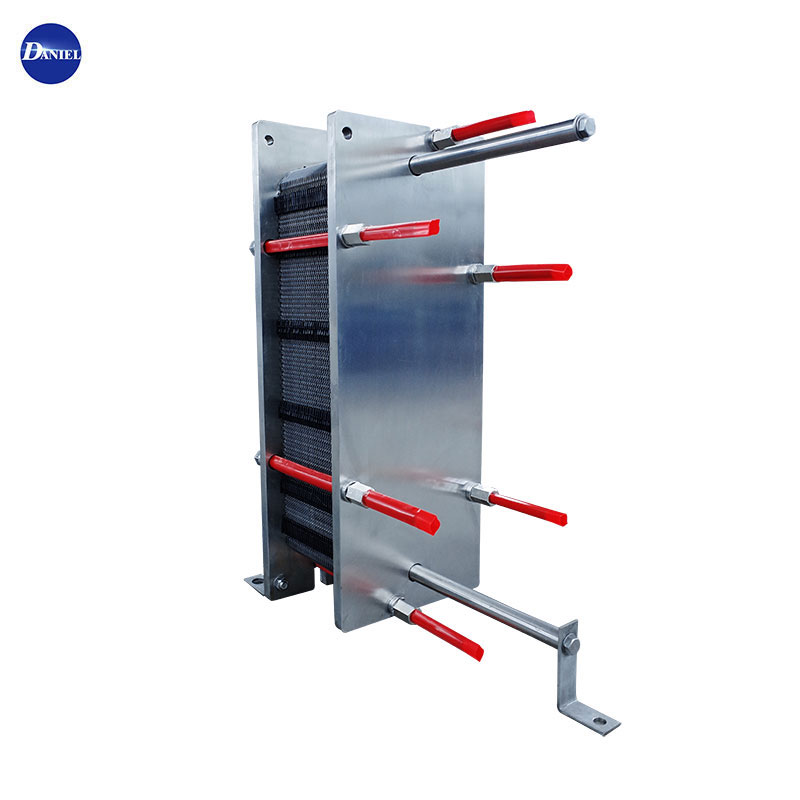1. The use of thermal mixing plate: the use of thermal mixing plate can reduce the plate area than the symmetrical single-process heat exchanger.
2. Adopt asymmetric plate heat exchanger: form a plate heat exchanger with equal cross-sectional areas of the cold and hot runners.
3. Adopt multi-process combination: multi-process combination arrangement can be adopted, when the flow of cold and heat medium is large.
4. Set a bypass pipe for the heat exchanger: a bypass pipe can be installed between the inlet and outlet of the heat exchanger on the side of the large flow, when the flow of the cold and heat medium is relatively large.
5. The choice of the form of the plate heat exchanger: the resistance should be no more than 100kPa.
Precautions for cleaning the heat exchanger:
1. The cleaning agent is injected from the bottom of the heat exchanger, and the water that needs to be cleaned on a wall of the plate heat exchanger is discharged;
2. Install a ball valve between the isolation valve and the heat exchanger. Both the water inlet and the water return port are installed; connect the pump and the pipe.
3. Flow out from the top; start to inject the required cleaning agent into the heat exchanger, after all the injection, cyclically wash.
4. If all the cleaning agent is injected at the beginning, it may or may cause the overflow of the cleaning agent;
5. To check the effectiveness of the cleaning agent regularly during the cycle, PH test paper can be used.
Precautions for cleaning the heat exchanger
1. Remove debris from the vents to ensure normal ventilation. Observe whether the outdoor rack is loose, clean the outdoor ventilation grille for foreign objects, and keep the ventilation openings unobstructed.
2. Surface cleaning of indoor and outdoor heat exchangers improves the efficiency of heat exchangers. When cleaning the indoor heat exchanger, you should carefully remove the panel, wipe it with a soft cloth, and use a small brush to gently scrub the internal heat exchanger, so as to achieve the purpose of removing dust and harmful accumulations that can breed germs, but pay attention Since the heat sink is a thin aluminum material, it is easy to deform after being stressed, so be careful to brush it.
3. Clean the dust on the filter. When cleaning the filter, first cut off the power, and then open the air inlet grill; take out the filter, clean the filter with water or a vacuum cleaner, the water temperature should not exceed 40 degrees, clean with a hot damp cloth or neutral detergent, and then wipe with a dry cloth At the same time, the filter screen cannot be cleaned with insecticides or other chemical detergents.
4. Clean the dirt and accumulation in the drainage part. The drainage part of the heat exchanger is easy to deposit dirt, and must be thoroughly disinfected regularly to ensure unobstructed drainage and prevent bacterial growth.


